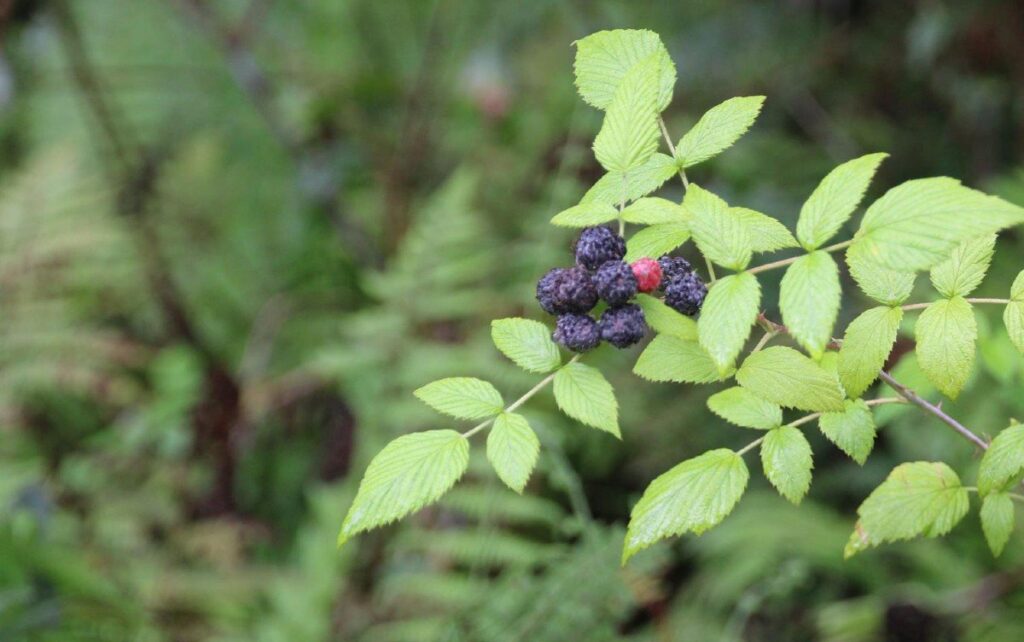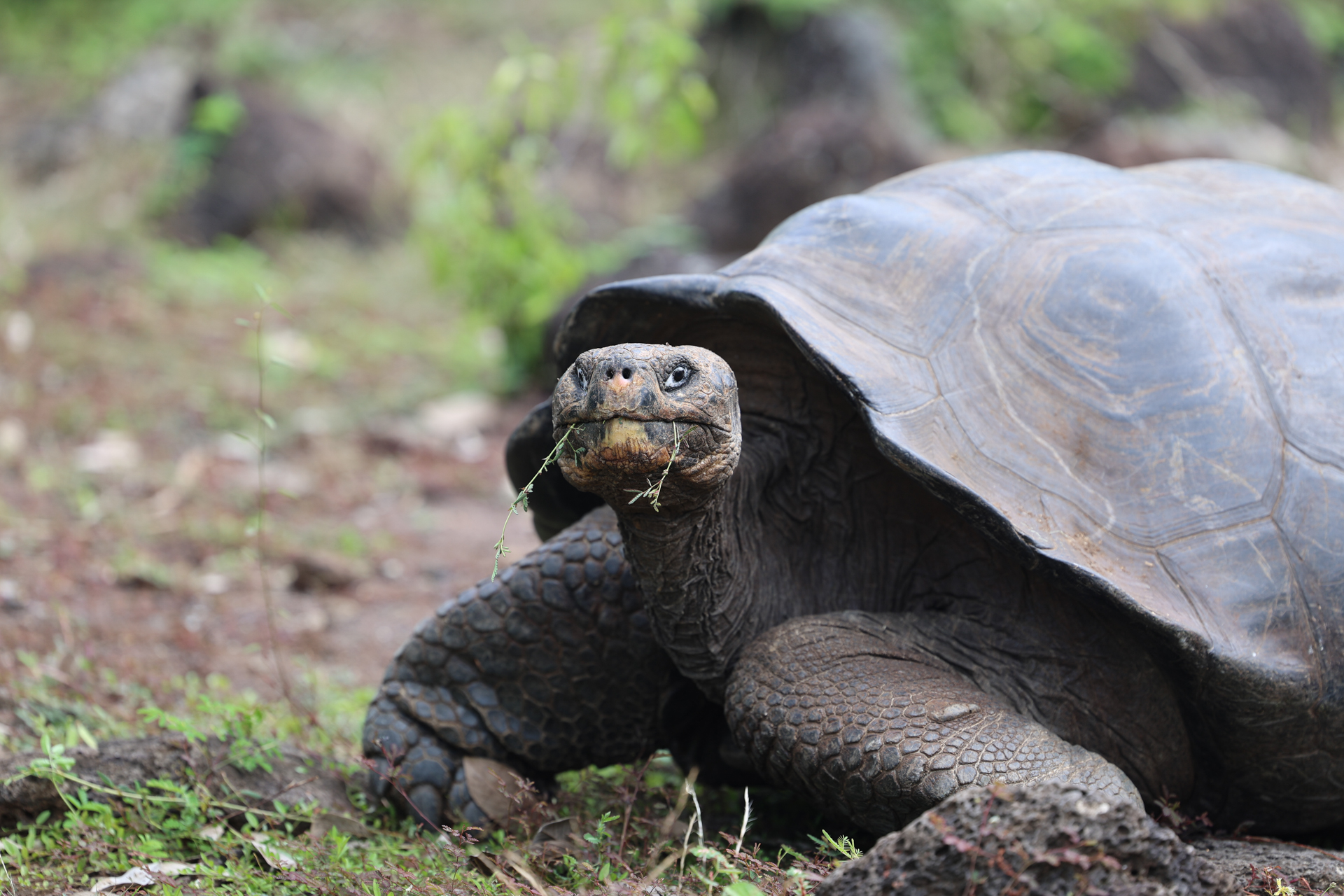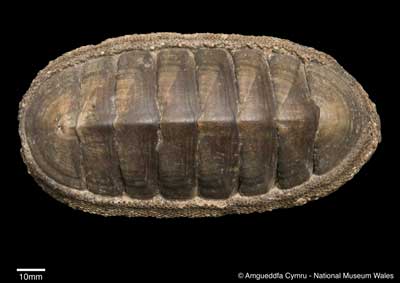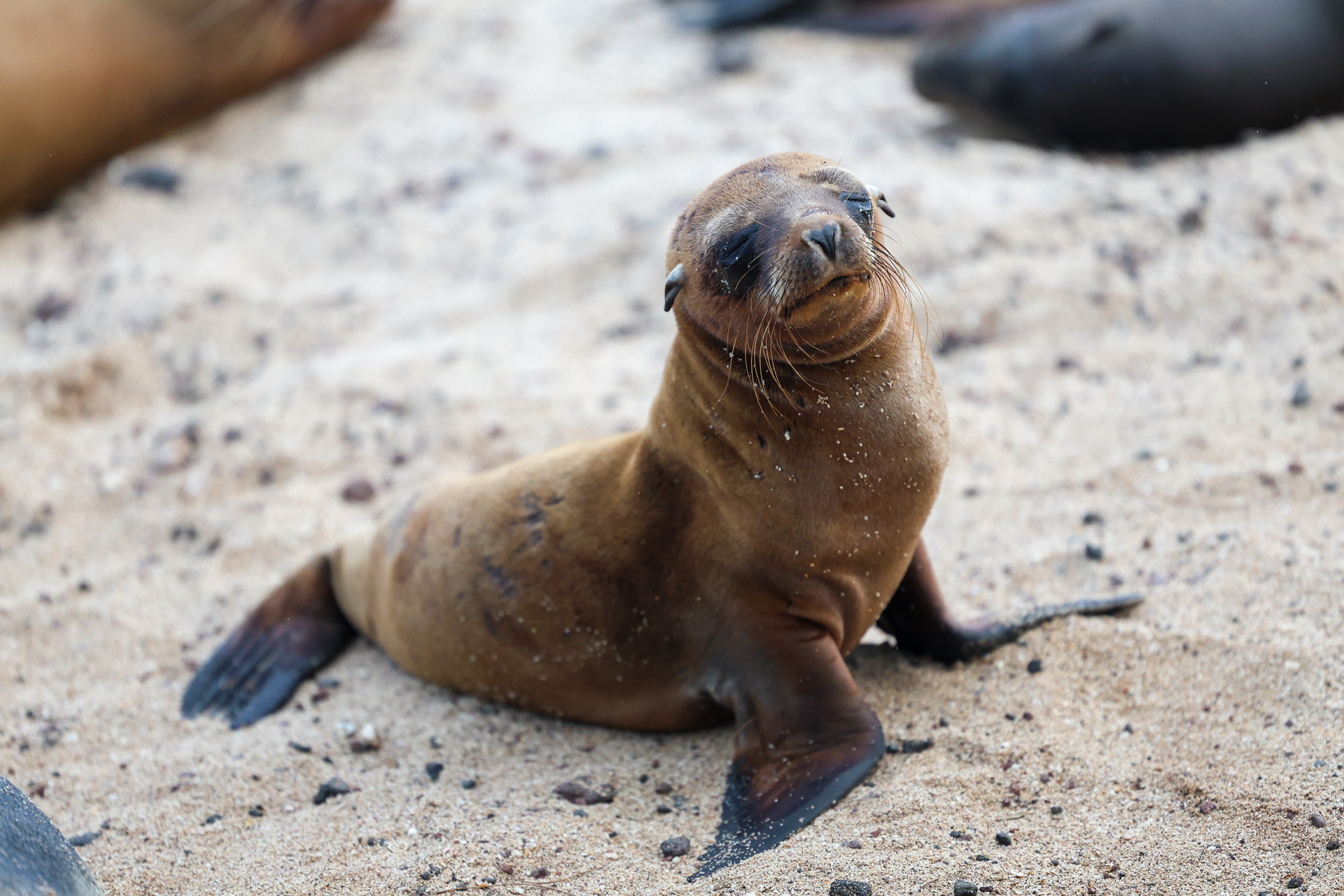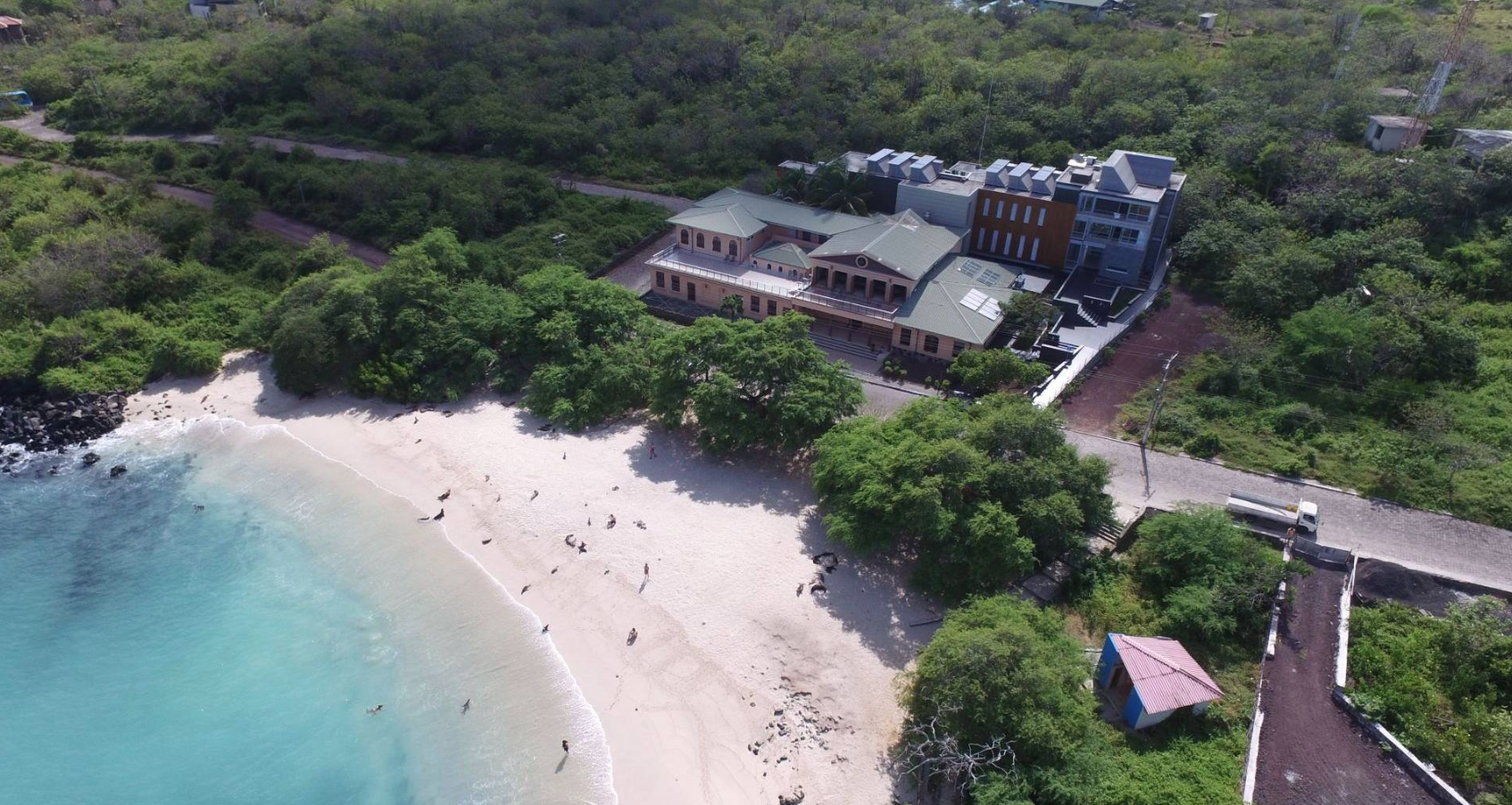The invasive raspberry (Rubus niveus) is one of the main threats to the native flora of the Galápagos Islands. It currently occupies around 30,000 hectares in the highlands, where it displaces native vegetation and affects biodiversity. The most commonly used control methods, manual removal and herbicide application, have proved unsustainable and have not effectively contained its spread.
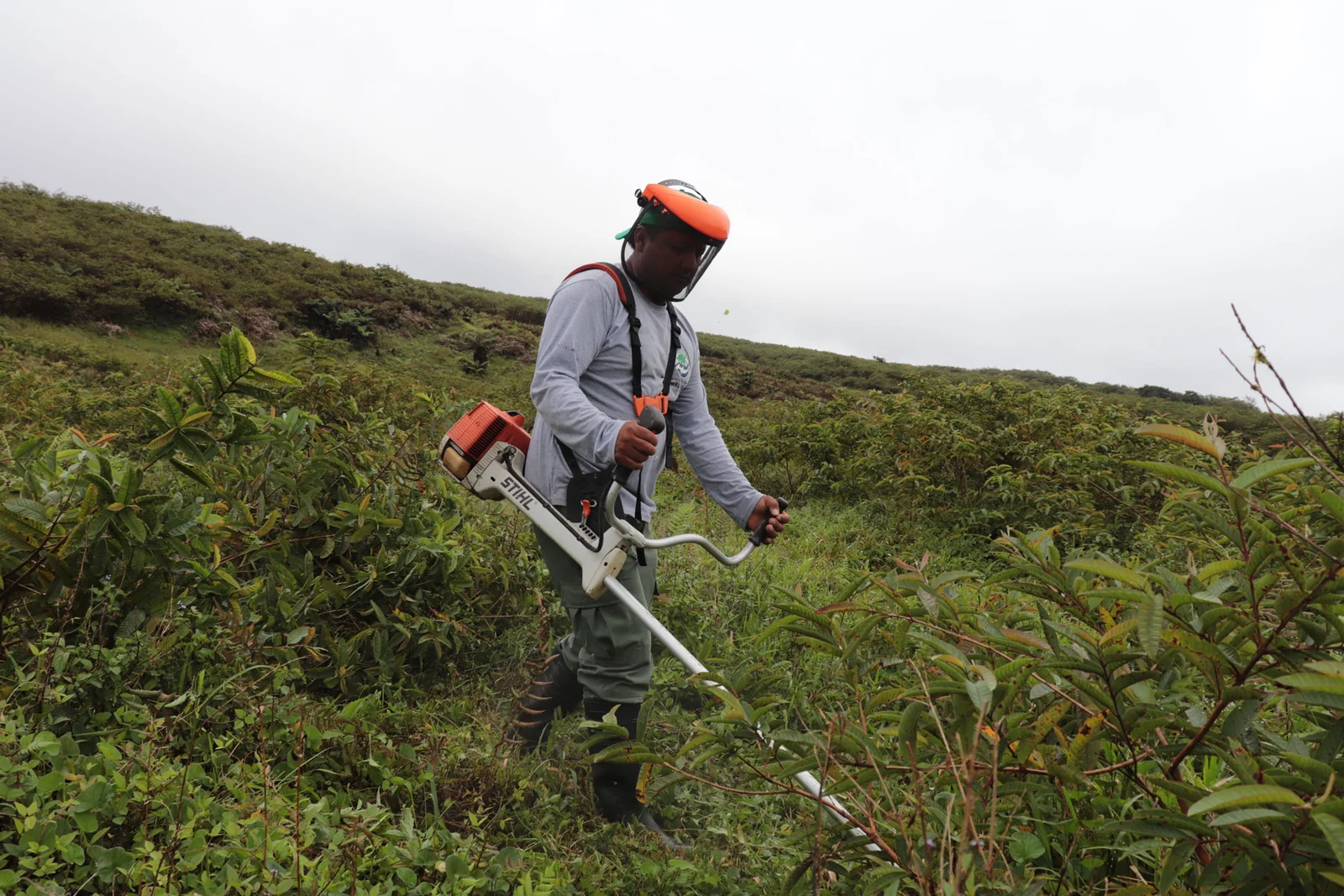
Photo: DPNG
This study aimed to identify phytopathogenic fungi associated with R. niveus that could become allies for its biological control. To this end, leaves, stems, and fruits were collected at 80 sites in the highlands of San Cristóbal Island, and the microorganisms present in healthy and diseased plants were compared. The fungi were then isolated in the laboratory and their ability to cause lesions on healthy R. niveus leaves was evaluated through controlled bioassays.
The results showed that diseased leaves harbored a higher abundance of pathogenic fungi than healthy leaves. Of 226 isolates tested, five consistently produced lesions on the leaves. The candidates identified include species of Colletotrichum, Fusarium, Lasiodiplodia, Phanerochaete, and Penicillium, which require more in-depth evaluation to confirm their potential.
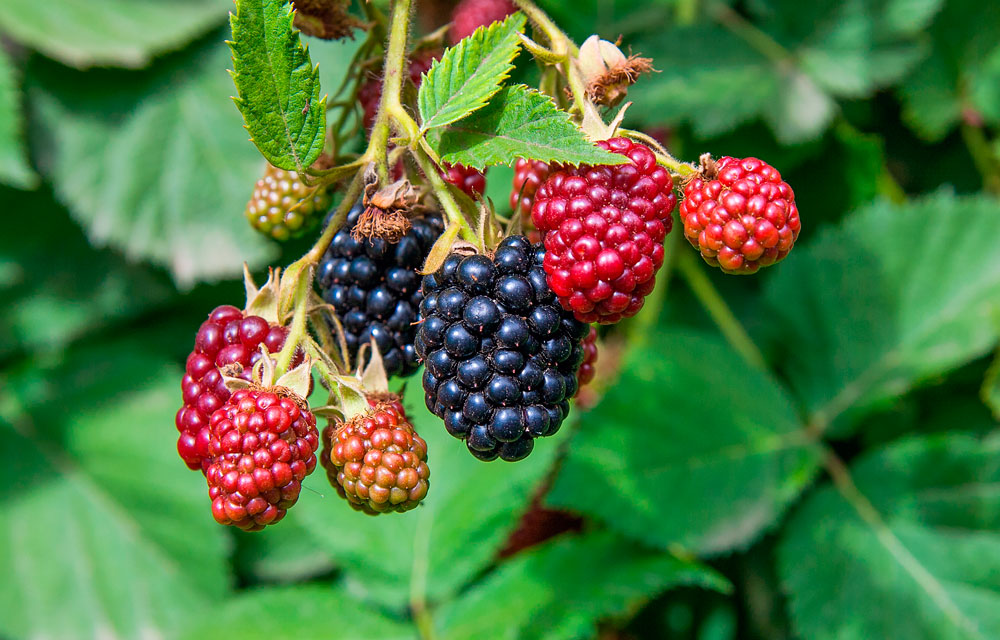
Fungal biological control emerges as a potential alternative to reduce the expansion of R. niveus in Galápagos. Next steps include whole-plant trials under controlled conditions and host-specificity testing to ensure these agents do not affect native species or crops. If their safety and efficacy are confirmed, they could be integrated into more sustainable management strategies alongside targeted control and restoration of native vegetation.
Read the article here: https://doi.org/10.1038/s41598-025-08949-5

